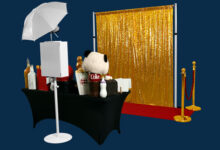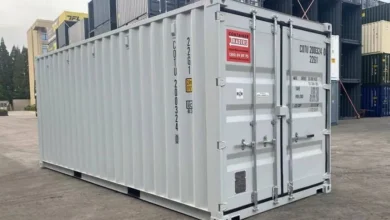
Planning And Design Of Your Office’s Conference Room
It is crucial to establish a productive office environment that incorporates an efficient conference room layout. An exquisitely planned conference space has the potential to foster greater cooperation and effective correspondence, as well as make an enduring impact on customers and business associates. In order to accomplish this, meticulous attention must be paid to the arrangement, choice of furniture, incorporation of technology, and overall visual appeal. With expert advice from Office Furnishings Warehouse in Burlington, we will examine crucial guidelines for designing a conference room that suits the requirements of your office.
1. Establish The Purpose
Prior to delving into design intricacies, it is critical to establish a precise and unambiguous purpose for the conference room. Is its primary purpose to facilitate video conferences, ideation sessions, client presentations, or large meetings? Determining the primary functions will provide direction for choices regarding arrangement, furnishings, and technology.
2. Select The Appropriate Layout
Your conference room’s architecture should be conducive to the nature of the gatherings you intend to organize. The following are several prevalent layouts:
- Boardroom Style: This arrangement is well-suited for formal gatherings and presentations; it comprises a sizable central table surrounded by seats.
- U-Shape: By enabling attendees to see the presenter and one another, the U-shape layout is ideal for interactive training sessions and discussions.
- Classroom Style: The classroom configuration, which is appropriate for seminars and training sessions, consists of aisles of tables and chairs arranged in a front-facing fashion.
- Theater Style: Optimal for sizable gatherings and presentations, featuring aisles of chairs oriented in the direction of the stage or screen.
When designing a layout, flexibility should be taken into account. The ability to readily reconfigure modular furniture enables the room to accommodate a wide range of meeting sizes and varieties.
3. Choose Functional And Comfortable Furniture
The choice of furniture is essential for furnishing a conference room that is both comfortable and functional. Here are several crucial factors to bear in mind:
- Ergonomic Chairs: Select chairs that provide adequate lumbar support, adjustable functions, and comfortable padding to ensure ergonomics. Extended meetings can be mentally draining; therefore, comfort is of the utmost importance.
- Quality Tables: Invest in durable, high-quality tables that complement the design and dimensions of the space. To maintain a mess-free environment, contemplate tables that incorporate cable management solutions.
- Additional Seating: Supplementary seating should be incorporated, such as benches or stools, to accommodate informal gatherings or breakout sessions.
An extensive selection of fashionable and ergonomic furniture options is available at Office Furnishings Warehouse in Burlington, to complement any conference room design.
4. Implement Technology
Sophisticated conference rooms necessitate resilient technology in order to enable uninterrupted collaboration and communication. Critical technological elements consist of:
- Audio-visual Equipment: For presentations, install high-quality projectors, screens, or large flat-panel displays. If remote meetings occur frequently, video conferencing equipment should be considered.
- Sound Systems: Implement a dependable sound system and strategically positioned microphones to guarantee crystal-clear audio. In addition to reducing pollution, acoustic panels can enhance sound quality.
- Establishing Connectivity: Ensure that there are sufficient power receptacles and USB terminals available to accommodate participants’ device charging needs. For added convenience, wireless charging stations should be considered.
- Ingenious Technology: Consolidate intelligent technology to effortlessly manage illumination, temperature, and audio-visual equipment. This may improve the meeting experience as a whole.
5. Emphasize Lighting
Ensuring adequate illumination is critical in establishing a lively and efficient conference space. Keep in mind the following:
- Natural Light: Optimize the utilization of natural light through strategic placement of the room and windows. Ambient light enhances both mood and productivity.
- Adjustable Lighting: Implement dimmable lighting in order to modify the level of illumination in accordance with the nature of the meeting. Establish a harmonious atmosphere by employing a blend of task lighting, ambient lighting, and overhead lighting.
- Avoid Glare: Ensure that displays and monitors are positioned in a way that prevents reflection from windows or lighting. When necessary, control natural light with the use of blinds or draperies.
Conclusion
Complex but rewarding, designing a conference room that satisfies the aesthetic and functional requirements of an office is a challenging endeavor. You can create a productive environment that leaves a favorable impression on both clients and employees by taking into account various elements, including layout, furniture, technology, illumination, and accessibility. Visit Office Furnishings Warehouse in Burlington for knowledgeable assistance and an extensive inventory of high-quality office furniture. Their well-informed personnel and a vast selection of products can assist you in designing a conference room that truly elevates your work environment.








